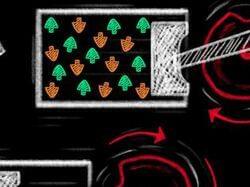In a schematic view, an engine uses a thermodynamic change to produce work. For example, when a gas is ignited, it expands and so pushes a piston. Now, researchers have been able to develop a similar kind of engine but instead of using the relationship between temperature, pressure, and volume, the new device uses quantum mechanics.
The quantum engine employs a gas that can turn from a fermion gas to a boson gas. Fermions and bosons are a way to divide all particles into two categories. Their difference comes from a property called spin, an intrinsic angular momentum. Fermions have a fractional value (1÷2, 3/2) while bosons have integer spin (0, 1, 2, …).
There is another difference that matters in the engine too: the Pauli exclusion principle. And this only applies to fermions.
